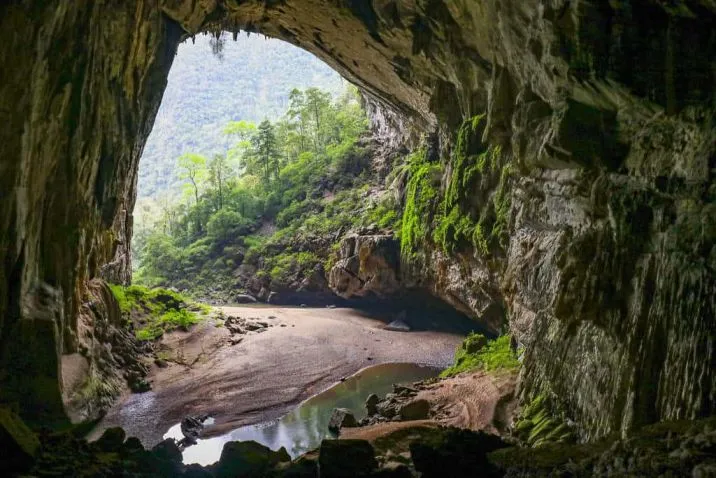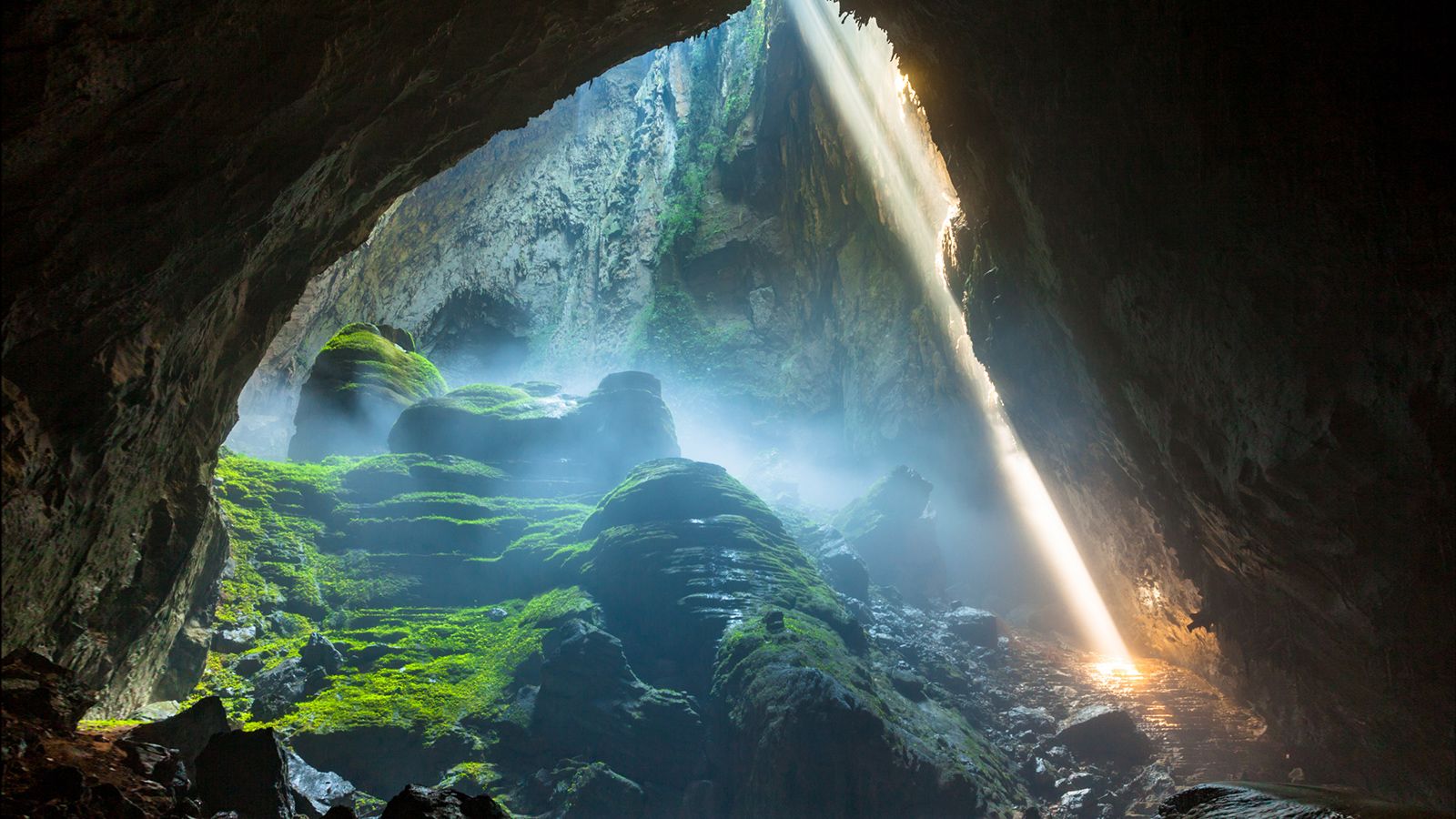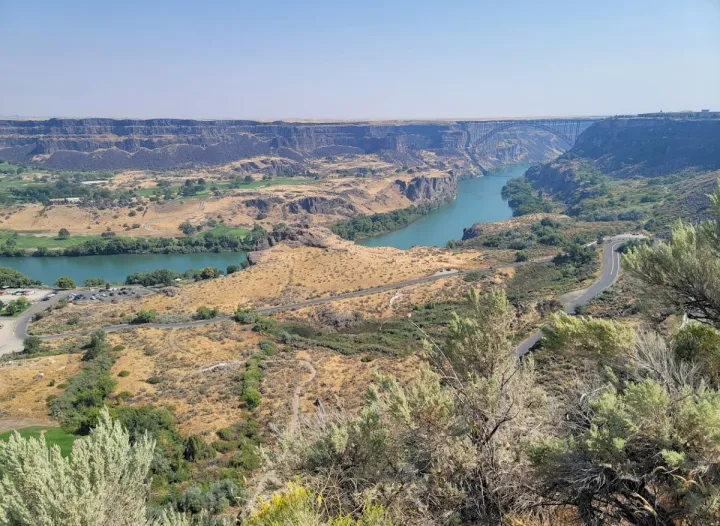Undiscovered Cave Has Its Own Unique Ecosystem

You come upon a cave entrance while strolling through the terrain of Vietnam's Phong Nha-Ke Bang National Park. Like awkward teeth, stalactites and stalagmites pepper the mouth, and plumes of hot breath give off clouds of steam. Once inside, there is complete darkness. At first, you have to follow a steep descent that takes you deeper into the cave. Though you cannot view Son Doong without your own light, it is renowned for its amazing structures and unique vistas. Son Doong is the largest cave in the world. There is no sunshine inside this cave. For millennia, perhaps even thousands of years, Son Doong has remained hidden. The inner workings of this cave were never touched until 2009, when a group of British adventurers, so to speak, reached landing.
Discovering the Largest Cave in the World

This tunnel has survived for almost 3 million years, expanding and housing a secret civilization of life. Ho Khanh, a local Vietnamese man, spotted it first.
In the early 1990s, Ho Khanh attempted to obtain wood or food deep within Phong Nha-Ke Bang National Park. He discovered a limestone cliff and followed it to the entrance of a previously unknown cave. He noticed clouds emerging from the cave entrance, as well as the sounds of a river within.
He left the cave, preoccupied with his desire to make a living, and soon forgot about it for nearly two decades. The British Cave Research Association examined the area for caves in the early 2000s, and Ho Khanh highlighted the one he discovered. The British cavers, eager for new findings, encouraged him to search for it again, which he eventually did. He told the cavers about the cavern's entrance after he found it again.
Exploring Son Doong

On April 7, 2009, Peter MacNab became the first person to officially enter the mouth of Son Doong Cave. Other intrepid explorers followed, eager to sketch out something completely new. Caverns are measured in various ways, including depth, length, width, and volume. Son Doong is the world's largest cave in terms of volume, taking into account all of the empty space and overall shape. So the area of the cavern and growths is measured in cubic meters.
After the initial expedition, San Doong was believed to be 38.5 million cubic meters in size, making it the world's largest cave. It only took a week to reach this conclusion. They measured this cave cross-sectionally, which means they made straight cuts through it, usually at right angles. Son Doong is the world's largest extensive cave, as measured by cross-section and volume.
Formed By an Underground River

Once you've gotten over the initial obstacles, you can see the beginnings of the river deep within Son Doong. This is the same river that has flowed beneath the ground for thousands of years, creating the cave. Son Doong exists because this river rushed across it, assembling it.
Son Doong is not only impressive because of its massive size; it also contains a few fascinating constructions known as dolines. Dolines are sinkholes. It is a depression in the soil that closes after all of the fallen rock forms a base. It would otherwise sink down into the earth.
This rainforest, known as the "Garden of Edam," is located more than 200 meters (656 feet) beneath the earth's surface and is thriving. Because of its unique environment, this jungle has its own ecosystem and weather system. This jungle is home to numerous exotic animals, and the trees reach hundreds of feet in height. Because the cave was just recently explored, little is known about the animals that live within it. Son Doong is also known for the "Great Wall of Vietnam," a 90-meter-high calcite barrier at the cave's edge. This corresponds to 295 feet of rock to navigate in a slick, dark environment using specialist equipment. You may also read this: Plan an Exciting Day Trip from Phoenix
Larger Than Originally Believed

In April 2019, a British team of explorers went diving in Son Doong and discovered that the world's largest cave was considerably bigger than previously imagined. There is a connection between Son Doong and Hang Thung caverns. Son Doong cave now measures 1.35 billion cubic feet, making it the world's largest cave. The river's origins, which formed this magnificent beauty of nature, remain unknown. There could be another larger cave connected that hasn't been located yet, or a body of water that hasn't been identified.
Whatever the origins of this vast cavern, it remains a fascinating illustration of nature's riddles. There is so much that remains unknown to us, and we might explore and discover for another thousand years and never fully understand what the earth has to offer us. Son Doong exemplifies nature's strength and resilience. Even when we aren't looking, it exists, grows, and creates.









.jpg)
.jpg)

.jpg)
.jpg)